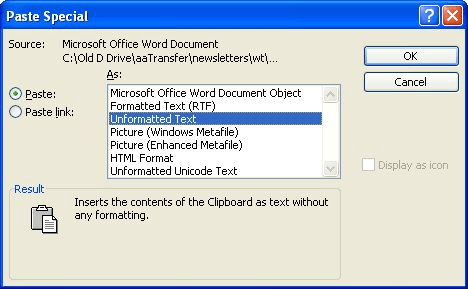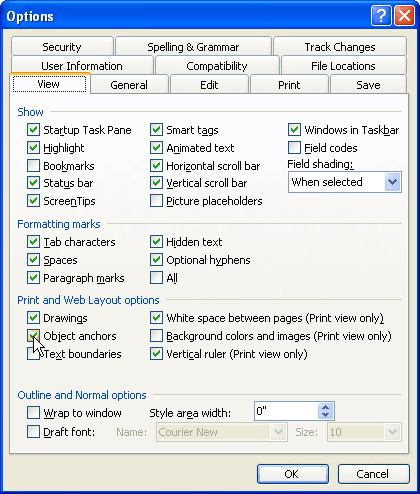

The Display options of the Word Options dialog box.

If you want, you can modify whether Word displays object anchors or not. In other words, they are treated like any other character in the text itself. Why? Because inline objects are anchored to the place within the text where they were inserted. If you select an inline object, then there is no object anchor to see. (More on that in a moment.) If you select a graphic object in your document and you see a boat-anchor icon appear in the left margin of the document, then you know you have the display of object anchors enabled. In other words, you can control the display of the anchors. I say "possibly" because object anchors are not always visible. An object anchor shows up as a small boat anchor. (That's a lot of "ifs," I know.) (See Figure 1.)įigure 1. If you click an object so that it is selected, and if the object is truly a floating object, and if you are looking at the document in Print Layout view, then you can possibly see the object anchor on the screen. The thing that indicates essentially where a floating object is located in relation to the text in your document is referred to as an object anchor. Floating objects are those that are placed on a layer over the text. Inline objects are those that reside on the same layer as your text and are positioned within the stream of text that surrounds the object. Set oRngAnchor = (1).Objects can be placed in your document in two ways: either inline or floating. The text is placed at the shape anchor point which usually is at the start of a paragraph. Because textboxes are a subset of shapes they will also be processed. The following macro will step through every shape in the document and if a shape contains a textframe, extract the text and delete the shape. The above macros only process textboxes and not other shapes containing text.

It would seem that your "pictures" are rectangles (or perhaps another shape such as a rectangle with rounded corners) containing textframes. However a rectangle to which a textframe has been subsequently added looks and acts the same but is not a textbox. You can then edit the text so that it appears as you want.Ī text box is a shape comprising a rectangle with a textframe and text. When this macro is done, you can do a search for "Textbox start" and you will be at the beginning of text that used to be in the text boxes that are now gone from your document. ' insert the textbox text before the range object ' copy text to string, without last paragraph mark If you prefer to transfer the text from the text boxes to the document, prior to deleting the text box, then a slight modification on the above macro will work: In other words, if a text box is used for placement of text, then the text in that text box is deleted along with the text box itself. You should realize that this macro removes all of the text boxes and their contents. The following macro will quickly remove all text boxes in your document:

If you want to get rid of only the text boxes, then the quickest solution is to use a macro. (I told you this was a brute force method.) The obvious drawback to this approach is that the other formatting of the original document is also lost, and you must reformat the entire document. The document text, minus the text boxes, is now in the new document.


 0 kommentar(er)
0 kommentar(er)
